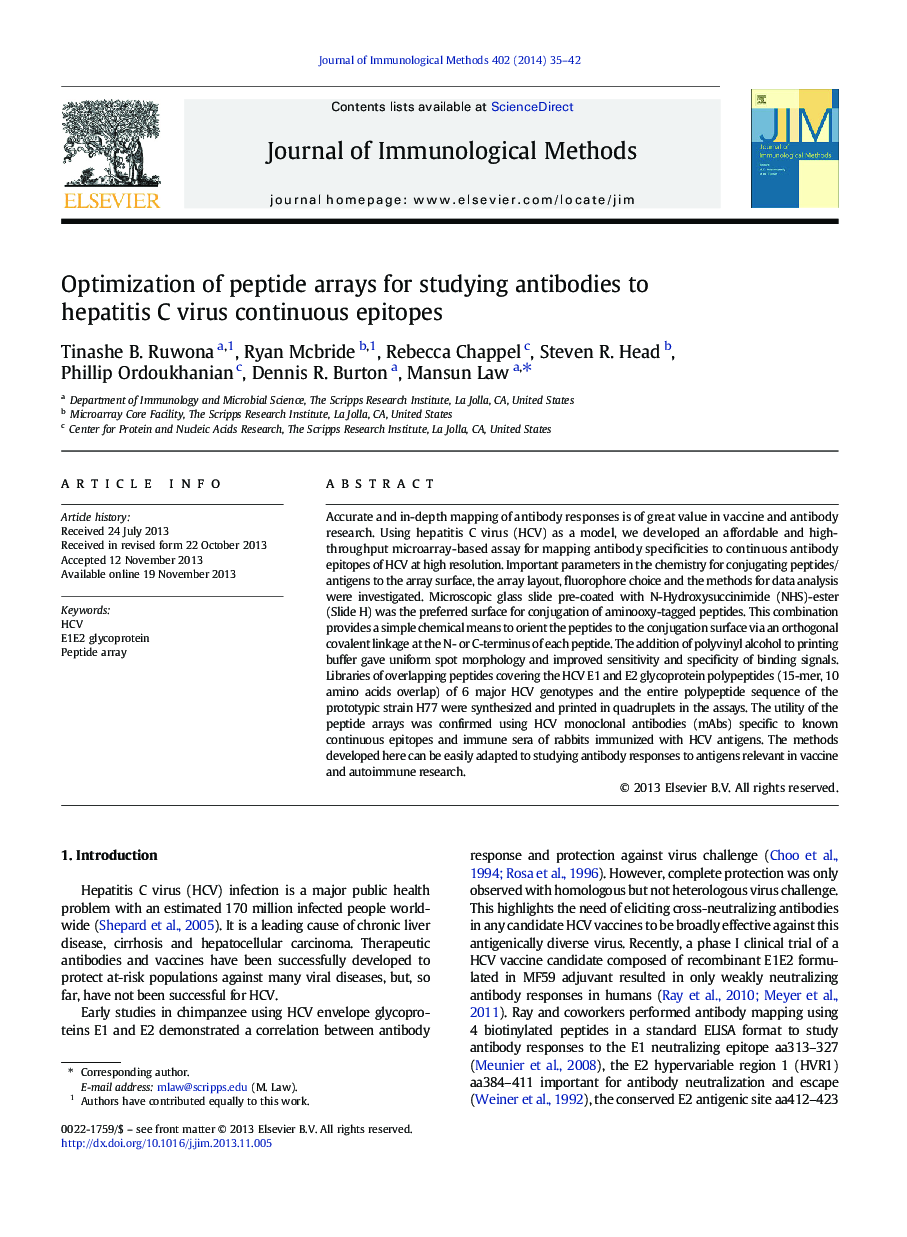| Article ID | Journal | Published Year | Pages | File Type |
|---|---|---|---|---|
| 2088241 | Journal of Immunological Methods | 2014 | 8 Pages |
Accurate and in-depth mapping of antibody responses is of great value in vaccine and antibody research. Using hepatitis C virus (HCV) as a model, we developed an affordable and high-throughput microarray-based assay for mapping antibody specificities to continuous antibody epitopes of HCV at high resolution. Important parameters in the chemistry for conjugating peptides/antigens to the array surface, the array layout, fluorophore choice and the methods for data analysis were investigated. Microscopic glass slide pre-coated with N-Hydroxysuccinimide (NHS)-ester (Slide H) was the preferred surface for conjugation of aminooxy-tagged peptides. This combination provides a simple chemical means to orient the peptides to the conjugation surface via an orthogonal covalent linkage at the N- or C-terminus of each peptide. The addition of polyvinyl alcohol to printing buffer gave uniform spot morphology and improved sensitivity and specificity of binding signals. Libraries of overlapping peptides covering the HCV E1 and E2 glycoprotein polypeptides (15-mer, 10 amino acids overlap) of 6 major HCV genotypes and the entire polypeptide sequence of the prototypic strain H77 were synthesized and printed in quadruplets in the assays. The utility of the peptide arrays was confirmed using HCV monoclonal antibodies (mAbs) specific to known continuous epitopes and immune sera of rabbits immunized with HCV antigens. The methods developed here can be easily adapted to studying antibody responses to antigens relevant in vaccine and autoimmune research.
